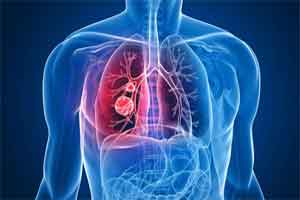- Home
- Editorial
- News
- Practice Guidelines
- Anesthesiology Guidelines
- Cancer Guidelines
- Cardiac Sciences Guidelines
- Critical Care Guidelines
- Dentistry Guidelines
- Dermatology Guidelines
- Diabetes and Endo Guidelines
- Diagnostics Guidelines
- ENT Guidelines
- Featured Practice Guidelines
- Gastroenterology Guidelines
- Geriatrics Guidelines
- Medicine Guidelines
- Nephrology Guidelines
- Neurosciences Guidelines
- Obs and Gynae Guidelines
- Ophthalmology Guidelines
- Orthopaedics Guidelines
- Paediatrics Guidelines
- Psychiatry Guidelines
- Pulmonology Guidelines
- Radiology Guidelines
- Surgery Guidelines
- Urology Guidelines
Risk-based lung cancer screening may save more lives than current USPSTF guidelines

Lung cancer screening based on individual risk has the potential to save more lives than current recommendations by the U.S. Preventive Services Task Force (USPSTF). The findings are published in Annals of Internal Medicine.
The USPSTF recommends annual lung cancer screening with low-dose computed tomography (CT) for persons aged 55 to 80 years who currently smoke or quit within the past 15 years and have at least a 30-pack-year history of cigarette smoking. These criteria may miss smokers at high risk for lung cancer who would have been selected for CT screening by individual risk calculators that more specifically account for demographic, clinical, and smoking characteristics.
Researchers from the National Cancer Institute used data from the National Health Interview Survey to compare USPSTF eligibility criteria with individualized, risk-based eligibility and estimate the effect of eligibility on lung cancer deaths preventable by screening since 2005. They found that using the Lung Cancer Risk Assessment Tool would draw in high-risk moderate smokers with a history of 20 to 29 pack-years who are currently ineligible for screening using USPSTF criteria. This approach could have prevented over 5,000 more deaths in 2015 than using the USPSTF screening criteria. Because of the U.S. population changes related to smoking between 2010 and 2015, adhering to the USPSTF criteria led to fewer ever-smokers being eligible for CT screening and fewer lung cancer deaths being averted by screening.
For more details click on the link: http://annals.org/aim/article/doi/10.7326/M17-2067

Disclaimer: This site is primarily intended for healthcare professionals. Any content/information on this website does not replace the advice of medical and/or health professionals and should not be construed as medical/diagnostic advice/endorsement or prescription. Use of this site is subject to our terms of use, privacy policy, advertisement policy. © 2020 Minerva Medical Treatment Pvt Ltd